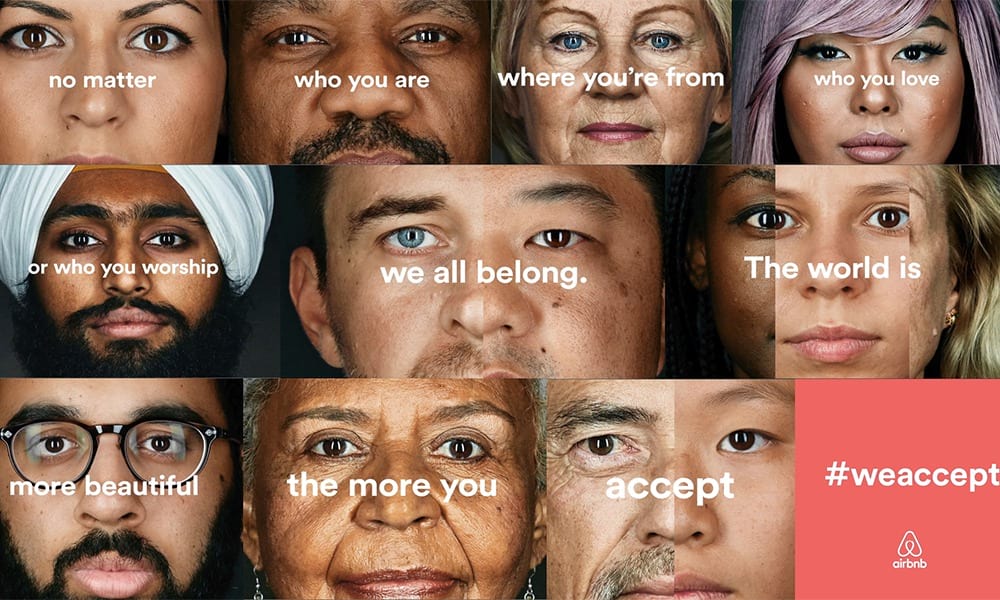Getting It Right: The Power of Inclusivity

News flash: The world is changing.
Everywhere you look, inclusive marketing is emerging as a vital force in the media landscape. With ever-shifting demographics and target audiences, the messaging power of inclusivity is undeniable—but only if handled with great thought and care.
For inclusive marketing to work, global brands must walk a very fine line: embody and convey values of inclusivity without giving the appearance of pandering or inauthenticity.
So, where to begin?
Relax. We’ve gone to the trouble of breaking down the essential rules of the road.
Inclusivity is essential to the future of your brand
In a world that’s growing more interconnected by the day, consumers have a staggering array of choices at their fingertips. Inclusive marketing can be a guiding light that helps your brand stand out from the competition. And these days, a neutral stance simply won’t cut it.
Studies show that consumers are now shifting away from judging brands on a transactional basis and towards making choices based on shared values. Brands are being held to higher standards—especially by millennials—and are increasingly expected to take a proactive stand on the issues that matter most to their target audience. This trend is not to be underestimated or pushed to the fringes as a token side campaign to win over a choice few. Instead, consumers expect a seismic change that still rings true to your core brand identity.
Zero in on the aspects of inclusivity that matter most to your customers
The success of any brand relies on understanding the needs of its customers. But in the age of social media and enhanced discourse, brands must go one step further and understand the full worldview of their target audience and what matters to them most. Taking an overly broad, catch-all approach can ring inauthentic and dilute the message. But going too narrow can mean missing the mark altogether. A great place to start is by defining areas of focus where society is still falling short—where solutions have yet to catch up with shifting attitudes.
Take the latest series of Barbie dolls. The iconic brand has gone above and beyond with dolls that portray skin/hair disorders, more realistic body types, people with disabilities and even prosthetic limbs. The takeaway: think big, think human and think like your customers do.

Diversity alone won’t cut it
If you think that overhauling your brand’s messaging by adding diversity via stock images is enough, think again. Inclusive marketing isn’t about achieving a minimum quota of representation—it’s about establishing a real connection and showing your customers that you share their worldview.
The goal is to find stories that resonate on a universal human level. Everyone has felt the sting of exclusion at some point in their life. Everyone is hardwired to root for the underdog. And everyone understands that empathy and compassion don’t fall neatly along demographic lines.

Stay true to your brand
Your target audience is changing. They are highly perceptive and well-informed. And they have a keen radar for inauthenticity, pandering and hypocrisy.
Many are the cautionary tales of brands that have overreached, attempting a millennial makeover that did little to endear their core customer base, much less expand it. Focus on messaging that’s true to your brand, instead of leaping on the bandwagon of the latest niche issue trending on Twitter.
The best way to avoid backlash and missteps? Hire or consult people closest to your target audience who can truly understand their point of view, and lead by example. Make sure your Diversity and Inclusion (D&I) policies can withstand the increased scrutiny that can come with inclusive marketing. If you don’t live up to the values you’re seeking to espouse, you run the risk of damaging PR stories that can backfire on a grand scale.

Go big or go home
When used effectively, inclusive marketing has vast potential for impact. For example, messaging that promotes greater accessibility and inclusion for the visually impaired touches those directly affected and their wider circle of friends and family. At the same time, it promotes a message of awareness and empathy—universal values that can be truly transformative and ensure that your brand thrives in an ever-changing sea of possibilities. As the lyric goes: “Better start swimming or you’ll sink like a stone.”
Subscribe FOR NEWS
Join Our Newsletter
Stay up to date with digital, technological and cultural insights!

2019 @ Datawords Group – View the terms – All Rights Reserved
